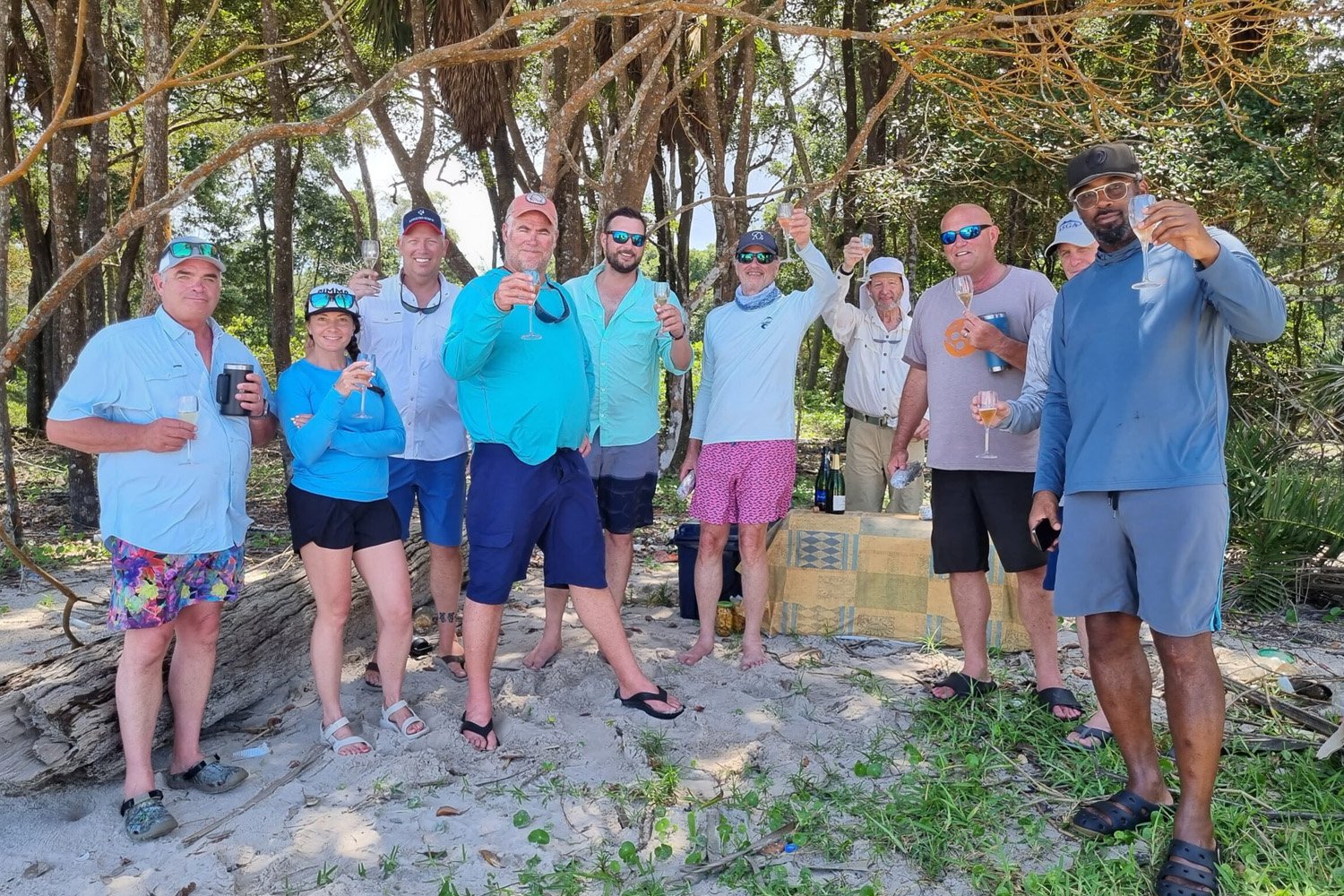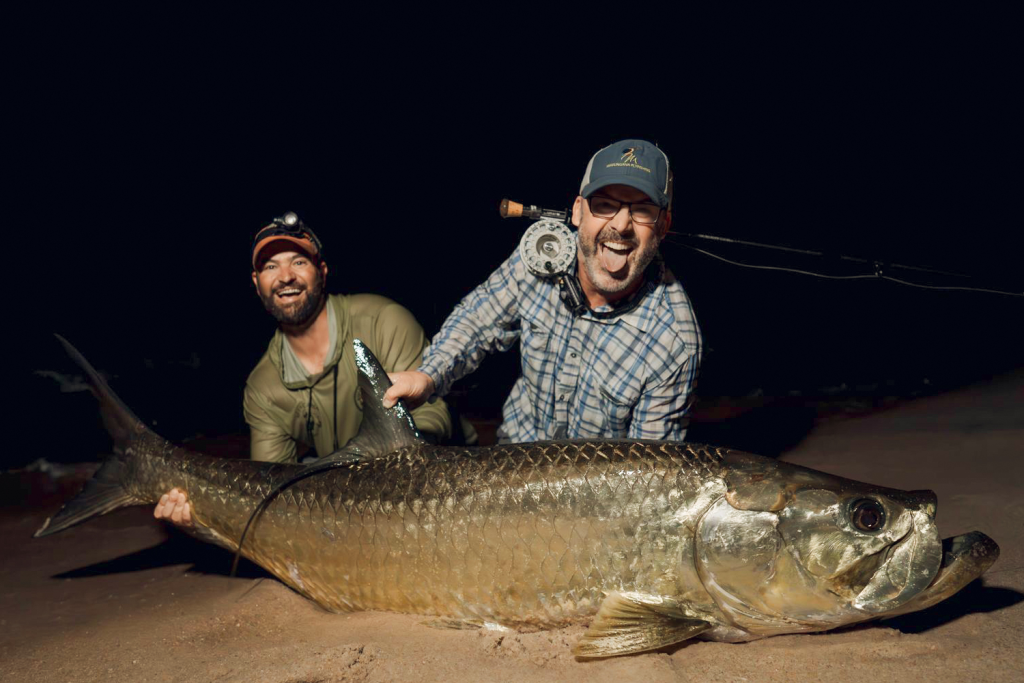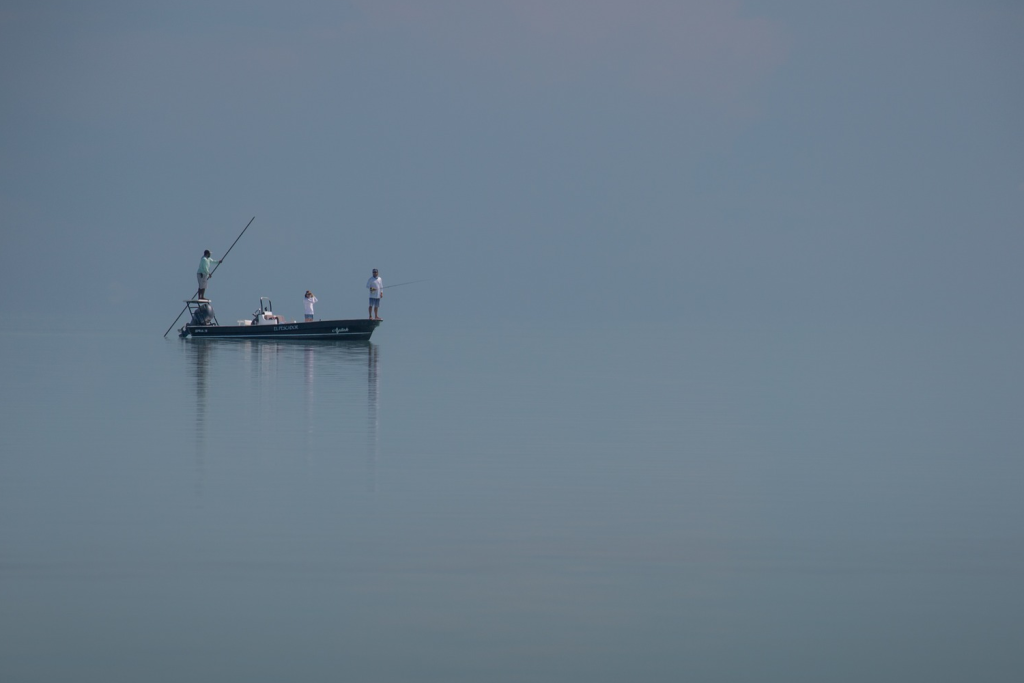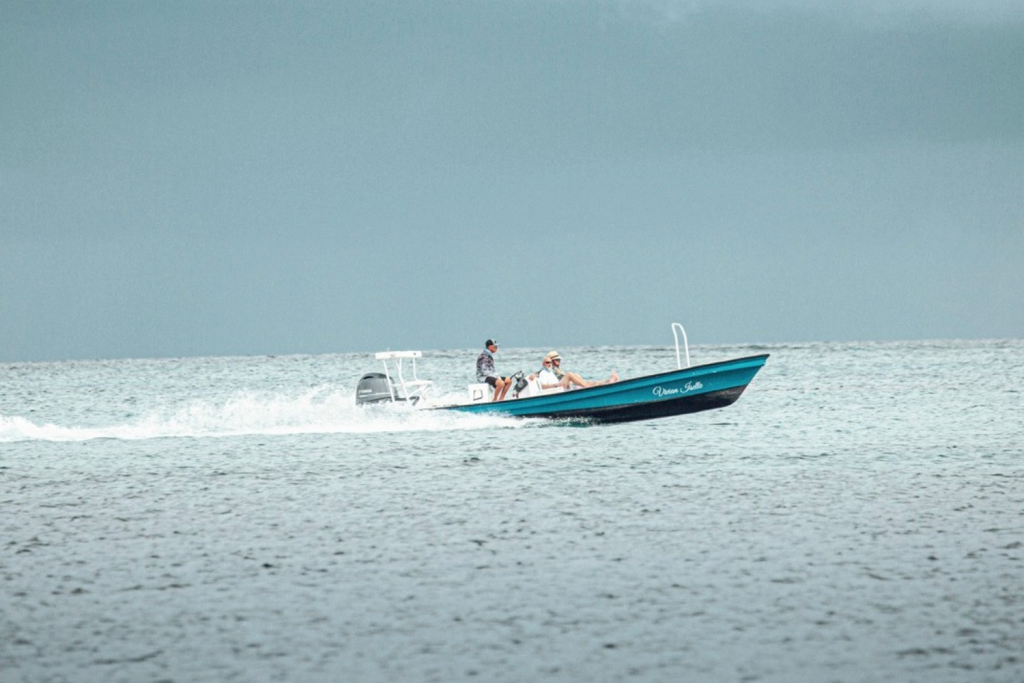West Africa Fishing: A group of 10 American clients was hosted by Dan Vermillion of Sweetwater Travel. We welcomed the group into camp with a dark and threatening sky on the horizon, and as the afternoon progressed and the gentlemen prepared their tackle and settled in, it became evident that there would be at least some type of storm that afternoon. Fishing in the rain is part and parcel of a trip to Sette Cama, so it didn’t deter us from embarking on their first afternoon session at the mouth. As we approached the mouth, however, the rain intensified, and by the time we reached the North bank, the water was falling in sheets. These downpours can often be short-lived, so we decided to take refuge in the abandoned shack at the mouth for about half an hour, enjoy a beer, and wait to see what the storm would do. Instead of abating, it seemed to intensify, with some rather spectacular crashes of lightning and thunder. As dusk approached, Ewan decided to call it quits and head back to camp in daylight, rather than risking navigating up the river in the dark during such a significant storm. Although the skippers are highly capable, and it’s not uncommon to return in a storm at night when caught at the mouth, if it’s avoidable and involves serious lightning, the guides prefer to make the responsible decision and try to return before nightfall.
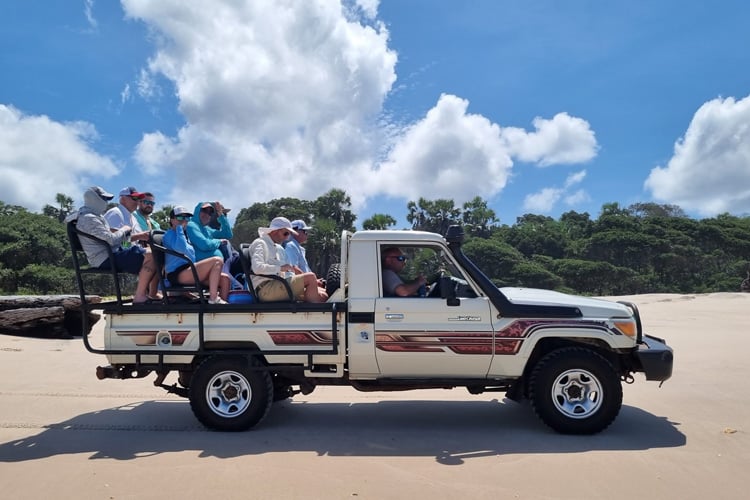

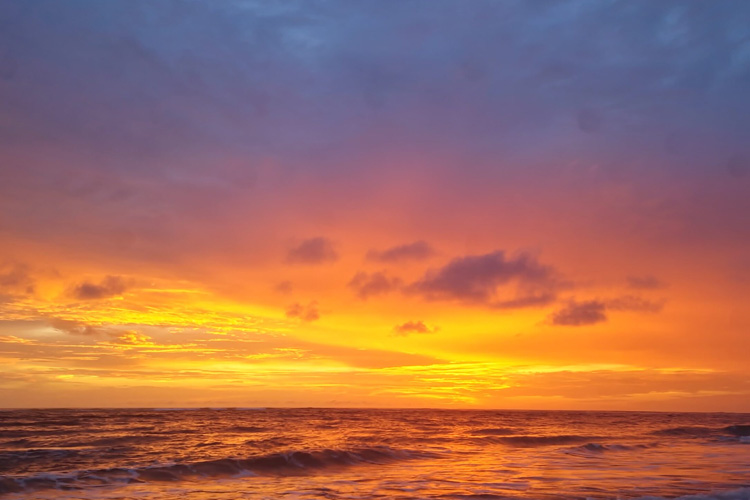

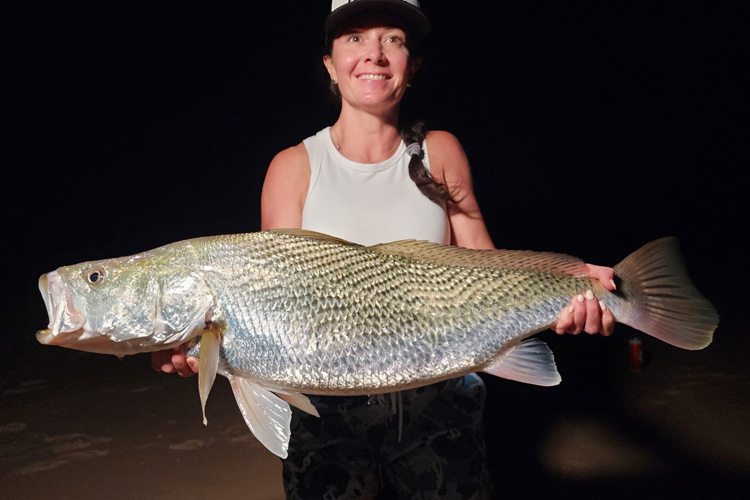

Rain at Sette Cama is always exciting, as it flushes the tannin-stained water out of the forest and catchment area, activating the mullet and other baitfish to head down to the mouth, attracting predators. We received about 50mm of rain in that downpour, which, by Gabon standards, is not significant, but we remained hopeful that it would have a positive effect on fishing in the days to come. However, Ewan warned us that the first 12 hours or even longer after a storm are often tricky, as they usually result in a sudden drop in water temperature and change in air pressure to which the fish take a short while to adjust.
Indeed, this was the case, as the first lagoon session the following morning was challenging. The jacks were present but barely showing themselves and hesitant to bite. Anglers using spin tackle had slightly more success in terms of fish numbers than those using fly tackle, but the standout catch of the morning was made by Dan, who landed a magnificent longfin jack weighing around 10/12kg. We had been drifting along the edge of the bank at Mabotso, and Dan was casting a yellow and white Andino fly into the deeper water when this fish struck. It was evident from the start that it was a substantial fish, and this became increasingly clear as minutes passed without sighting it, despite Dan applying constant pressure. Eventually, several hundred meters downstream, the fish tired, and we were able to land it, transfer it to a tub filled with water on the deck, and hastily move to the bank to capture some photos in the shallows. It was a remarkable fish for him to begin his Sette Cama experience with.
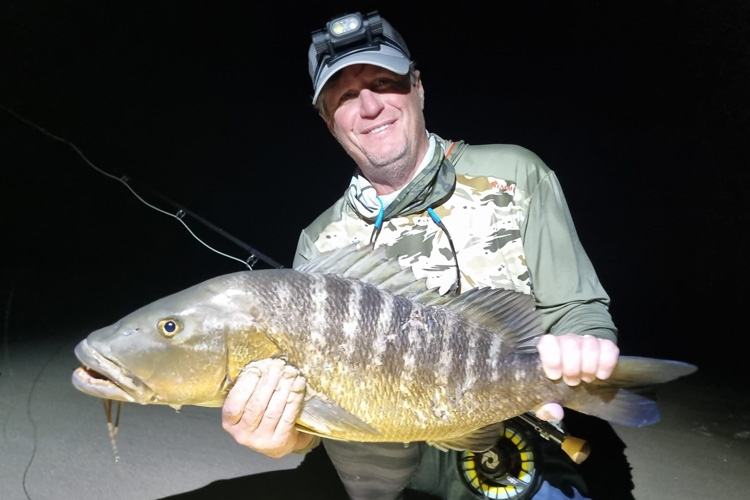

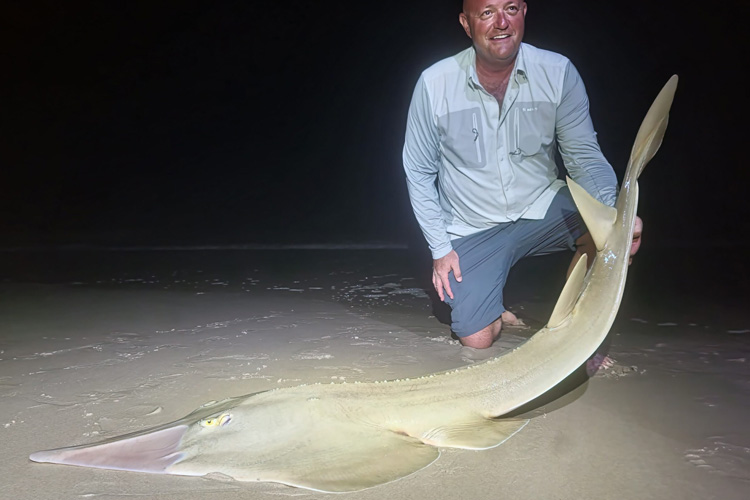

That afternoon, we returned to the North bank of the mouth, hoping that the rains had cleared the dirty water. Jaime was particularly eager to try and catch a snapper on fly from the sand, so as darkness began to fall, I accompanied him to the “snapper bank” to the North. The formation here was ideal for fly fishing, with a deep trough scoured out tight against the shore and a shallow bank within casting range – perfect snapper habitat! Having spent a lot of time fishing for striped bass at night on the beach back home, Jaime was comfortable casting the large fly into the darkness, and I was confident that if there were fish present, he would hook one. It didn’t take long before he exclaimed from the darkness, and I saw the rod bending in the limited light. Unfortunately, this excitement was short-lived as the hook pulled loose. We continued fishing down the trough, and just before I was about to suggest calling it a night and fishing our way back, he hooked another fish and this time managed to land a decent snapper on the sand in quick time. It was a well-deserved reward for his skillful angling.
From that point on, the morning lagoon session with the jacks heated up again. With 10 anglers, we operated five boats, with two anglers per boat. This arrangement allowed everyone ample space to fish comfortably and ensured that nobody had to wait for a turn to cast. Rick initiated a friendly competition between the boat skippers to see who could produce the most fish for their clients. Ultimately, it seemed that whichever boat Scott was on happened to be the top performer of the day, rather than it being attributed to any particular skipper. The entire crew had multiple opportunities to hook into the jacks, with double hook-ups being common, and by the end of the week, everyone had a collection of impressive jack photos to commemorate the sessions.
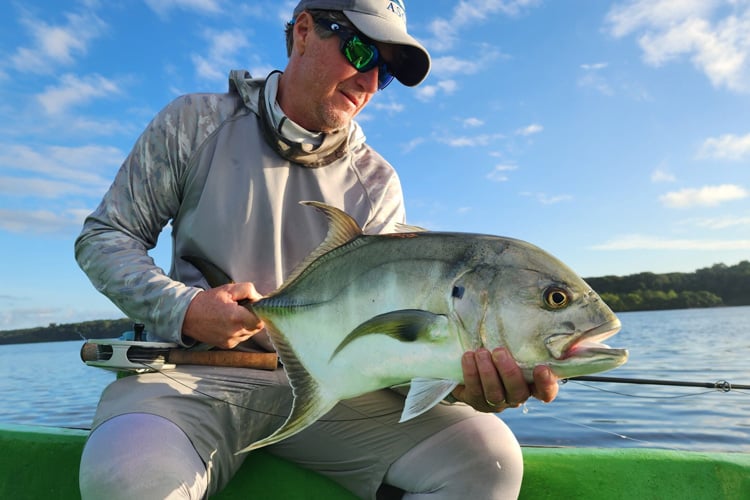



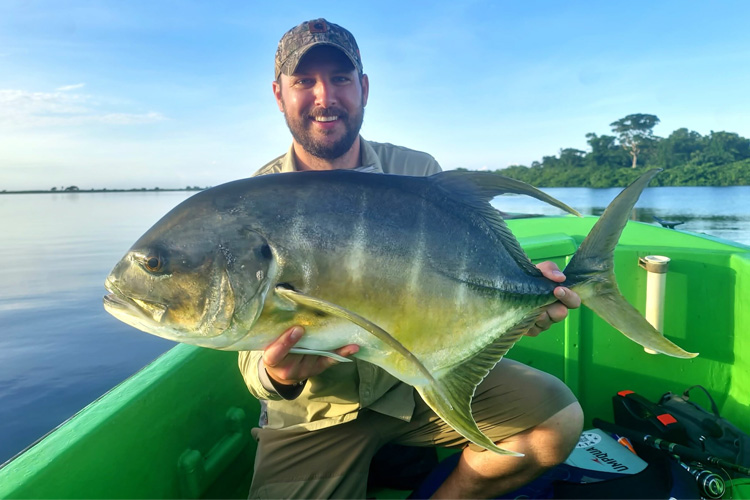

However, it wasn’t solely about fishing for this group, and one morning they embarked on a delightful forest walk starting from the upper reaches of the Moli Moli stream. This walk traversed an incredible diversity of habitats, from swamp forests to savannahs. Although they didn’t encounter them directly, they were only minutes behind a group of gorillas that had just descended from their nighttime nests and were making their way through the forest. These forest walks are truly special experiences, and as much as it’s difficult to tear oneself away from the fishing, it’s an experience worth having while there. The sheer size of the trees and the vastness of the forest make one feel rather small and insignificant.
Fishing at the mouth with fly and spin tackle proved to be challenging, so the less fervent purists in the group opted to switch to bait fishing, yielding impressive results. Brett, Christina, and Dave enjoyed some remarkable catches, causing the fly-fishing purists to question their dedication. Most bait-fishing sessions followed a similar pattern, with jacks caught during daylight hours followed by Senegal Kob once darkness fell. There were also numerous sand sharks around, and if a fish didn’t take the bait quickly enough, one of these creatures would often oblige, providing anglers with some sport and opportunities for cool photographs.
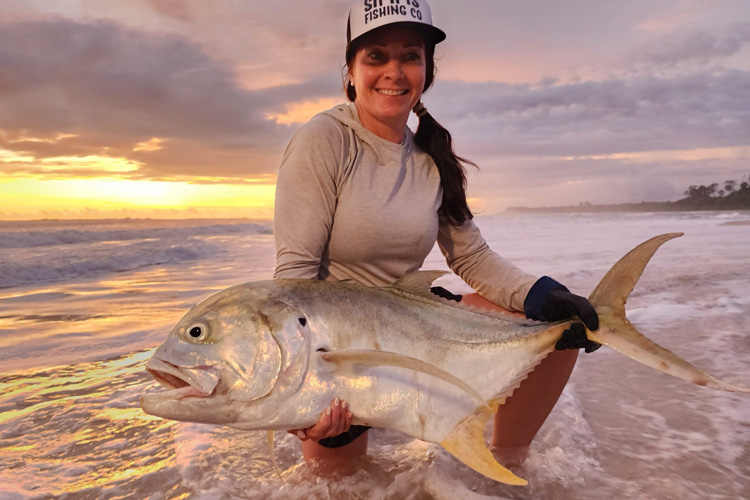

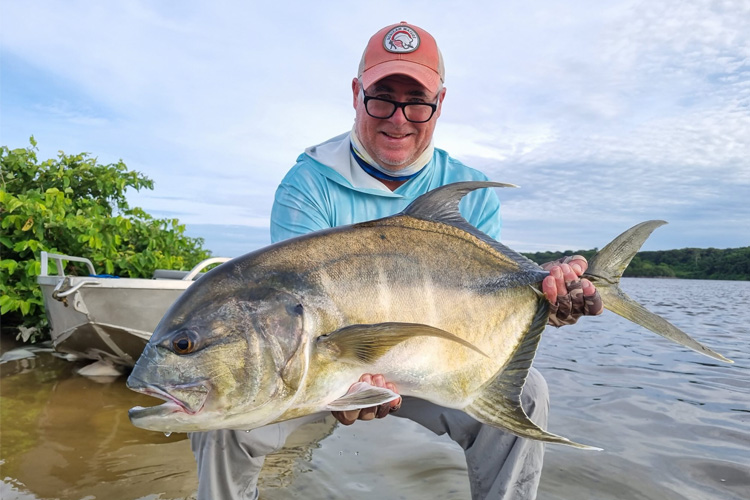

Christina outshone the men with her bait-casting skills, landing some impressive fish in nearly every session, including a beautiful jack crevalle in the 12-15kg range, with a stunning Sette Cama sunset on the horizon providing a memorable backdrop. This fish gave her quite a workout on the 15′ surf casting rod, but she rose to the challenge, despite having shaky arms by the end, she persevered to land and release the fish unaided.
On the group’s final full day in camp, after the morning jack session in the lagoon, we packed coolers and set out in the land cruisers for a picnic. The chosen spot was a 20km drive south along the beach, nestled beneath palm and milkwood trees, creating a picturesque setting. During the drive, we had a brief interruption when an ornate monitor lizard made an appearance. Ewan quickly leaped out of the vehicle and pursued it into the forest, returning shortly afterward, drenched but victorious after retrieving the large lizard from the swamp where it had taken refuge. It was a fantastic opportunity for the guests to get up close and personal with this beautiful reptile before it was released back into the wild. The picnic was delightful and served as a fitting conclusion to a wonderful week as we toasted to the time spent with good people in a spectacular place.
CONTACT US
If you’d like to know more about the fish, fishing, and accommodation at Sette Cama in Gabon, you can contact our destination manager Paul Stevens on 01603 407596 or email at paul@sportquestholidays.com, who would love to speak to you.
